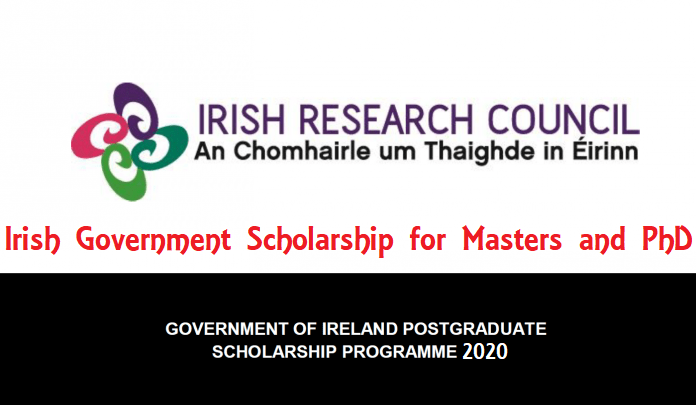01.COMSATS Institute of Information Technology
3,301,201,20 Years,2738,35452,Mathematics,Very High,42.30,77.00
[/table]
02.National University of Sciences And Technology (NUST) Islamabad
-,340,119,30 Years,1280,10027,Engineering & Technology,Very High,64.60,61.20
[/table]
03. Quaid-i-Azam University
Quaid-i-Azam University (once named Islamabad University) was established in July 1967 under the Act of National Assembly and started teaching and research programmes for PhD and MPhil degrees. It was, however, gradually and later decided to offer Master’s, graduate, and now undergraduate programmes. The University, for its international repute, faculty and programmes attracts a large number of foreign students although it offers admission to a measured number of students from all regions of the country as it is a federal public sector university.
It has been able to establish its links with some selected universities in Europe, South Asia and the United States. The international educational and research institutions including UNESCO, IRSIP, Agencia Espanole de Cooperacion International (Spain) etc. collaborate their research activities with the Quaid-i-Azam University. Moreover, a reasonable size of the faculty members of the University have been working in the international universities like Oxford, Cambridge, Columbia, Heidelberg etc. earning applause and awards such as International Peace Award from Brussels.
Currently, the Quaid-i-Azam University has four faculties and nine other teaching and research Institutes, Centre and Schools. Briefly included; Faculty of Biological Sciences, Faculty of Natural Sciences, Faculty of Social Sciences, Faculty of Medicine (affiliated), Area Study Centre for Africa, North and South America, Centre of Excellence in Gender Studies, National Institute of Pakistan Studies, National Institute of Psychology, National Institute of Historical and Cultural Research, National Institute of Asian Civilizations, and the Computer Centre.
For growing educational and technical needs of the country, the University imparts quality education and training on lower strata of life in the field of computer and runs a wide range of short term certificate and diploma courses. In all, the University’s academic programmes, have an enrollment of over 5,500 students.
The University also maintains a high standard in providing services. It has well equipped classrooms, state of the art labs and libraries. Other facilities like hostels for male and female students, sports and play fields, transport, mosque, bank, utility shop, post office, photocopying and thesis/paper binding, telephone, café etc. are centrally located on the Campus.
-,651,116,50 Years,401,13724,Agriculture & Forestry,High,47.80,47.80
[/table]
04. Lahore University of Management Sciences (LUMS)
-,701,161,31 Years,216,3944,Technology,-,-
[/table]
05.University of Engineering & Technology (UET) Lahore
The University of Engineering and Technology (main) located in the northern part of Lahore on the historical “Grand Trunk Road (G.T. Road)”, near the magnificent Shalimar Gardens built during the great Mughal Empire.
The institution started its career in 1921 as the ‘ Mughalpura Technical College ’. Later it became the ‘Maclagan Engineering College’, a name given to it in 1923 when Sir Edwards Maclagan, the then Governor of the Punjab who laid the foundation stone of the main building, now called the Main Block, which still retains its majesty despite the wear and tear of over eight decades. At that stage the institution offered courses of study in only two disciplines; Electrical Engineering and Mechanical Engineering.
In the year 1932, the institution was affiliated with the University of the Punjab for award of a Bachelor’s Degree in Engineering. In 1947, at the time of independence, the Institution was offering well-established B.Sc. Degree Courses in Civil, Electrical and Mechanical Engineering.
In 1954 it started a Bachelor’s Degree course in Mining Engineering, the first-ever of its kind in the country. However, the real expansion and development of the institution commenced in 1961 on its transformation into the ‘West Pakistan University of Engineering & Technology’, and within a few years Bachelor’s Degree Courses were started in Chemical Engineering, Petroleum & Gas Engineering, Metallurgical Engineering, Architecture, and City & Regional Planning.
Later, the University started to develop its postgraduate programs, and by 1970’s it was offering Master’s Degree Courses in various specializations of engineering, architecture, planning and allied disciplines. Later, Ph.D. Degree Program was also instituted in a number of disciplines. With phenomenal increase in students enrollment in seventies, the University established an Engineering College at Taxila in 1975, which later became an independent University in 1998 as the University of Engineering and Technology, Taxila.
Keeping in view the upcoming power crises situation in the country, in 2004 the University established its own Power Generation Unit with capacity of 2 Mega Watts later enhanced to 3 Mega Watts and became first and only countrywide educational institution who has its own Power Generation Unit
To meet the growing demands for the Engineering graduates and allied disciplines in the country, the University started an expansion program in the new millennium. Consequently the teaching and research capacity of the UET-Main was enhanced and the establishment of the satellite campuses was taken up . At present, the University has three satellite campuses; the Faisalabad Campus, the Kala-Shah-Kaku Campus, and the Rachna College .
[table caption=”Ranking Table” width=”728″ colwidth=”20|100|50″ colalign=”left|left|center|left|right”] QS Stars,QR Ranking,Uni. Age,Faculty,Students,QR Ranking By Subject,Research,Academic Reputation,Overall-,702,251,90 Years,750,12505,Information Technology,High,Not Available,Not Available
[/table]
06.University of Karachi
Spread over 1200 acres of land, University of Karachi was established through the parliament as a Federal University in 1951. However, through another act of the parliament in 1962 its status was redefined as university of the province of Sindh. On 23rd October, 1950 the Karachi University Act was passed and after an amendment in 1951, it was enacted and Prof A. B. A Haleem was appointed as its first Vice Chancellor. For the first two years, the University of Karachi remained as an examination University for the affiliated colleges. In the year 1953, it started its teaching and research activities at two Faculties of Arts and Science. Opened with an initial intake of 50 students, the university is now a sprawling structure of 53 Departments and 20 world class and highly reputable Research Centers and Institutes, under eight faculties of Arts, Science, Islamic Studies, Pharmacy, Management and Administrative Sciences, Law, Education and Medicine. At present, the enrolment of regular students at the Campus is slightly over 24,000. There are over 800 teachers and more than 2500 supporting staff.
The University in the beginning was housed in small buildings adjacent to the Civil Hospital. Meanwhile, due to rapid expansion, it began to be felt that the space in which the university was functioning was not enough for its needs. Moreover, the atmosphere of the congested and polluted area was not conducive to higher education and research. Thus, a plot of 1279 acres of land was acquired on the Country Club Road (now University Road) and on 18th January 1960 the university was shifted to the new campus. Thus began, a new phase in the life of the university. The day is still commemorated by various old students’ Association and the University administration jointly.
Karachi University always proudly mentions the names of renowned educationists and scholars associated with this institution of higher learning like, Dr. I. H. Qureshi, Dr. Mahmud Hussain, Dr. Salemuzzaman Siddiqui, Dr. Afzal Hussain Qadri, Dr. M. M. Ahmed, Dr Mujtaba Karim, Prof. M. Ilyas, Prof. Q. Fareed, Dr. Ibadur Rehman Khan, Prof Muntakhib ul Haq, Prof. Memony, Dr. S. M. Yousuf, Dr. M.A Wali and Dr. Karawala. The faculty was drawn not only from Pakistan but also included eminent educationists from Europe and America.
Karachi University today
The Karachi University today is the biggest university in the country. It comprises eight faculties with which all the colleges of the city are affiliated. B.S., M.S., M.Phil. and Ph.D. classes under five of these faculties Arts, Science, Pharmacy, Management and Administrative Science and Islamic Learning are conducted on the campus, while under the Faculties of Medicine, law and Education it examines the students admitted to their affiliated colleges. Research programmers leading to M.Phil and Ph.D Degree are offered under all the faculties.
Science
The Science Faculty which consists of 23 departments and five research Institutes can be said to be the biggest scientific centre in the country. The Research Institutes include the HEJ Research Institute of Chemistry, which is world renowned and has also been designated World Academy of Science. It is the prime research institute of the country and has high level research faculties for chemical science particularly Natural Product Chemistry.
Other Institutes are Dr. Panjwani Centre for Molecular Medicines and Drug Research, Khan Institute of Biotechnology and Genetic Engineering, Dr Afzal Hussain Qadri Biological Research Centre, which is a common research facility for all the biological science departments; the Marine Resources Collection and Research Centre, which is the biggest repository of marine life from the Arabian Sea. National Nematological Research Centre, which undertakes research in plant pest control. Centre of Excellence in Marine Biology, a federally founded centre for the study of marine fauna of the Arabian Sea; the Institute of Environmental Studies, Institute of Molecular Genetics and Umair Basha Institute of Information Technology which houses the department of Computer Science.
It is noteworthy that the number of M.Phil/Ph.D in science produced by the Karachi University far exceeds the number produced in any other university of the country. So far, about 600 M.Phil, 300 Ph.D, 7 D.Sc and 7 D.Litt. degrees in Science have been awarded by the university. The University teachers are also involved in various research projects and contribute regularly to publications of home and abroad. Only in 2006 the number of research papers published by the faculty of the university was 506.
Library
The library of the university is one of the largest library in the country. Housed in spacious building, it has a collection of over 360,000 books, and over 110,000 copies of national and foreign journals and periodicals. There is also a microfilm section which has copies of rare manuscripts from the British museum, the India Office Library and the Bodleian and Cambridge University libraries.
A highlight of the library is the Quaid-i-Azam’s personal collection of books, many of which carry his own signature. Copies of the All India Muslim League papers are also available. Work is in progress for setting up a resource centre, equipped with internet and scanner microfiche. Now, the Central Library is being gradually digitalized and will be able to cater the larger number of students. The LEJ National Science Centre is the most significant addition to the Karachi University which is a recent development.
The centre not only houses one of the largest digital one libraries of the mechanism and capacity to assist other campus library by resources and provide leadership in the application of technology to help the researchers, scientists, scholars and students of academic and R&D institutions of Pakistan Facilities of video conferencing are available and fully operative. Beside the central library, every department also has its own seminar library equipped with the necessary books.
Evening Program
The University of Karachi introduced the Evening program in 1995 to provide an opportunity to the in service peoples and professionals to pursue higher education in the evening initially at a few departments The program started while gradually the number of departments offering degree courses in the evening has increased.
Four Year Degree Program: The latest development this year is the introduction of four year degree program at the University to bring the university education at par with the International standards. In the revised curricula of four years program a number of new subject have been added to enable the passed out students to have wider opportunities in the job market.
New Era of Development
The University of Karachi witnessed a new era of speedy developments in all spheres when Dr. Ishrat Ul Ebad Khan took over as Governor of Sindh and Chancellor of the universities in the province. His deep personal interest and commitments in the university affairs is an ongoing source of continued interest in academic, research and managements activates at the intellectual growth at the campus.
The University has now embraced upon a gigantic process of multifaceted progress with emphasis on capacity building and quality enchantment. Ever since its inception, it is in this era that constitutional and statutory bodies of the university are holding their meeting with regular intervals, further bolstering the process.
Regular holding of Selection Boards has enabled the University to add more than two hundred new teachers to various faculties and departments in 2006-07. Many departments in faculties of science and Arts where strengthened by modernizing facilities recently to enhance their quality and productivity.
These include Departments of Physics, Chemistry, Statistics Food Science and Technology, Biotechnology, Computer Science and Mass Communications. For common facilities for science in various scientific disciplines a centralized science lab has been established. It has further enhanced the capabilities for scientific research. Some noteworthy developments which serve as land marks in the university include a highly sophisticated and well equipped Herbarium for research in plant science.
Already completed Botanical Garden is first of its kind in the country. The Garden adds plenty of beauty to the campus on the one hand while on the other it serves as an open lab for the Plant scientists.
Construction of hostels for the visiting faculty and research scholars and additional facilities for M.Phil/Ph.D scholars, have further enhanced chances for quality and speedy research. The perennial residential problems at the campus are also expected to solve partially with the completion of new blocks of the staff apartments. All these and many other successes were due to active encouragements the university received from the Higher Education Commission and the Chancellor of the University.
A number of new development projects are on the anvil while many others are at various stages of completion. The University is now moving fast on the path of developments playing its due role in the national development.
-,703,252,65 Years,532,18376,Engineering,High,40,39
[/table]










